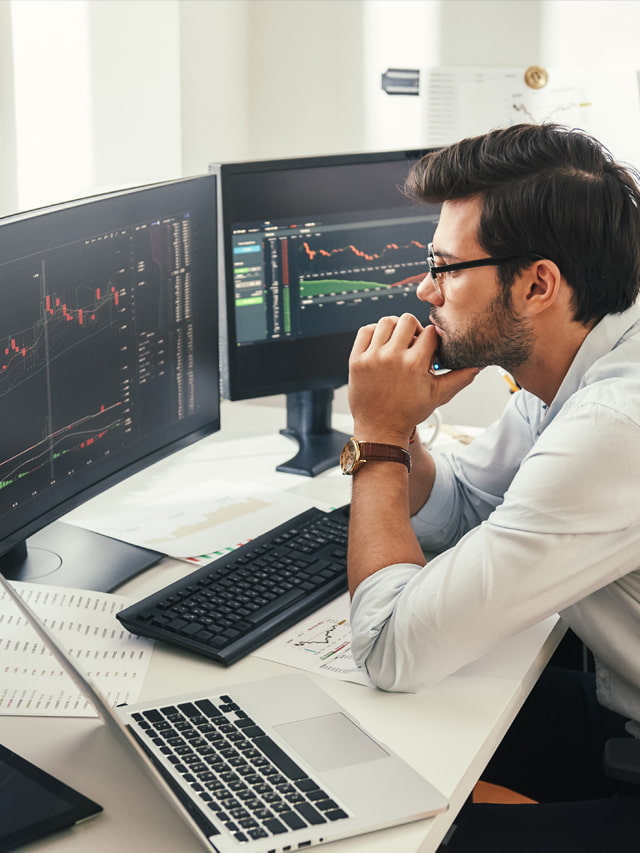Dollars, euros, and pounds are currencies that go up and down against each other. There are hundreds of currencies which explains why forex trading is so interesting. Forex trading lets you invest in currencies and make substantial profits on a 24/7 basis. You can buy when a currency is low and sell when it’s high to increase your profitability. It’s no wonder that millions of people are drawn to this financial market.
Like any other market segment, forex trading comes with opportunities and challenges. If you want to profit and invest in forex, you need to learn how the market functions and where opportunities lie. There are many forex trading courses that will show you the concepts behind the market, the strategies, and the risks involved.
If you are a beginner, forex trading can be overwhelming and risky. It’s best to take a forex trading course to cover the basics and give you the foundations to design your own strategy.
Why Learn Forex Trading?
Forex trading involves buying and selling currencies on the global market. It is one of the most liquid markets in the world. Over $6 trillion is traded in the forex market every day, which means it offers enormous opportunities for profit. Traders can make money by speculating on the rise or fall of currency pairs, leverage market trends, and exploit price movements.
The forex market is highly accessible as it operates 24 hours a day, five days a week. Traders can participate regardless of their time zone or market hours. The market is also highly liquid, meaning that it’s easy to buy and sell currencies quickly without significant price fluctuations.
Trading forex can be risky. Market fluctuations are often influenced by many factors, including geopolitical events, a change in the interest rate, and economic news.
When you enter the forex market, you want to do so on the best terms. That means invest, profit, and avoid mistakes. The best way to build your toolset is to join a forex trading course that will set the basis for your success.
What to Expect from Forex Trading Courses
The forex stock market works through a decentralized network of banks, brokers, and financial institutions. It’s open to retail traders who can access market conditions through online forex brokers. Traders use different tools and strategies to analyze the market and design their strategies.
Forex trading courses are created for beginners to teach them the basic skills necessary for successful trading. They cover the essential terminology, tools, strategies, and risk management techniques needed to build their trading strategy.
Key Components of a Beginner’s Forex Trading Course
While it’s possible to learn forex trading independently, it can be difficult and costly to try to understand the market on your own. You will probably lose a lot of money and the learning curve is steep.
Experts with hands-on experience are the best way to avoid common pitfalls and reduce the risk of making expensive mistakes.
Basic Terminology
It all starts with basic terminology used in the forex market. This includes terms like pips, lots, leverage, spread, and margin. These terms will help you understand price movements, manage trades, and calculate profits and losses.
Essential Forex Trading Strategies
Forex traders rely on two main types of analysis: technical analysis and fundamental analysis.
Technical analysis studies price charts and uses indicators to predict future price movements.
Fundamental analysis focuses on the economic and geopolitical factors that influence currency prices.
Part of a forex trading course is to show you how to understand and pair these variables.
Risk Management Techniques
Successful traders don’t just focus on maximizing profits—they also protect their capital. A major feature of risk management is using stop-loss orders to limit potential losses as you buy or sell. You also learn other risk management techniques to protect your investment.
Practical Trading Skills
Practical exercises let you apply what you have learned. This includes access to a demo trading account, which simulates live trading conditions without risking real money. You get hands-on experience and test different strategies before trading with real capital.
Market Analysis Techniques
Aside from tools and strategies, beginners also learn how to check and analyze the market. This includes both technical and fundamental analysis:
- Technical Analysis: Analyze price charts and use technical indicators (such as moving averages, RSI, and MACD) to find trends and potential entry or exit points.
- Fundamental Analysis: Fundamental analysis tells traders how economic news, interest rates, central bank policies, and geopolitical events impact currency prices. Traders who incorporate this analysis into their trading plan are a step ahead of the competition.
How to Choose the Right Forex Trading Course
The ideal forex trading course should cover the following areas:
- Basic and Intermediate Strategies: The course should teach the basics and also introduce intermediate strategies to help you grow as a trader.
- Risk Management: The course should provide in-depth coverage of risk management techniques to avoid losses.
- Hands-on Learning: Look for courses that offer demo accounts and real-world case studies to help you practice what you have learned in realistic trading conditions.
- Self-Paced Courses: These courses let you learn at your own pace. They are a good option for beginners with busy schedules.
- Instructor-Led Courses: These courses are led by experienced traders who teach, answer questions, and lead live trading sessions.
- Mixed Formats: Many courses combine video lessons, reading materials, webinars, and live sessions for a fulfilling learning experience.
Benefits of Taking a Forex Trading Course
Structured Learning Path
A well-designed forex course provides a structure that moves from beginner to advanced topics. This approach starts with the basics before moving on to more complex strategies.
Risk Reduction
You can’t afford to lose your capital. You learn about tools like stop-loss orders and how to calculate risk-reward ratios to avoid many of the common mistakes that traders make.
Confidence Building
A forex course can help build your confidence in your skills. Demo accounts and useful feedback from instructors will make you more comfortable with real-world trading.
Access to Community and Support
Being part of a trading community allows you to ask questions, share ideas, and gain insights from others. Many courses also offer mentorship or opportunities for one-on-one guidance.
How to Get the Most Out of Your Forex Trading Course
Active Participation
Engage actively with the course content. Watch videos, complete assignments, and practice with a relatively small amount of money in a demo account. Don’t be afraid to ask questions and participate in discussions.
Keeping a Trading Journal
Keep a journal of your trades, including the reasoning behind your entry and exit points, the outcomes, and any lessons learned. Track your trades and reflect on your decisions to learn from successes and mistakes.
Constant Practice
Practice on demo accounts and gradually apply what you have learned to live trading. Focus on consistency, and always take time to analyze your trades and adjust your strategies.
Additional Resources for Forex Beginners
Books for Further Learning
Read books by experienced traders for valuable insights and to build your knowledge of different types of forex trading. Some popular titles include “Currency Trading for Dummies” by Brian Dolan and “The Little Book of Currency Trading” by Kathy Lien.
Webinars and Live Sessions
Join live webinars and sessions for insights into trading strategies and market analysis. Many forex brokers and educators offer free or paid webinars where you can learn from experienced traders in real time.
Be a Successful Trader
A successful forex trader never stops learning. They start from the fundamentals and slowly build up their tools and skills.
Structured forex courses teach basic concepts and help you avoid common mistakes. With the right course, you can develop the skills and confidence needed to enter the forex market and capitalize on your investments.
As a beginner, start with a reputable course, practice using demo accounts, and gradually build your knowledge. Remember, as with everything in life, forex trading requires patience, discipline, and continuous learning. Be persistent and humble to maximize your chances of success and picture the forex market as a long-term investment that can pay off.




